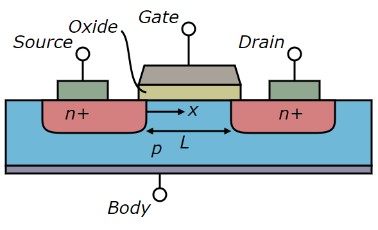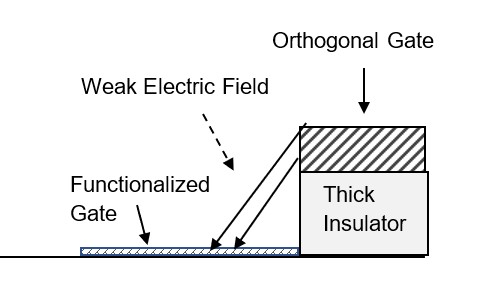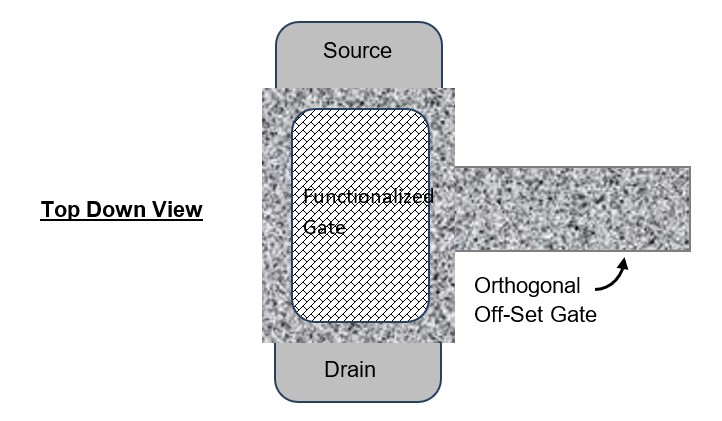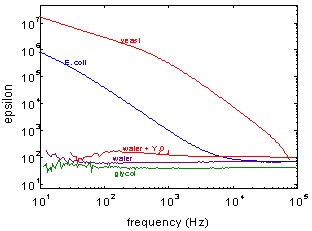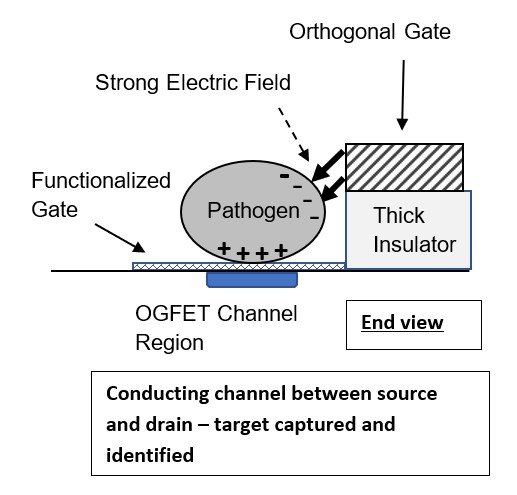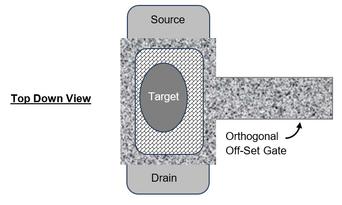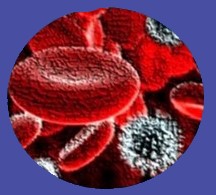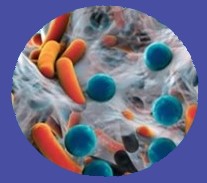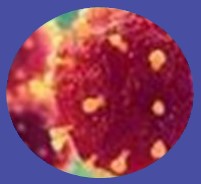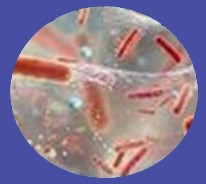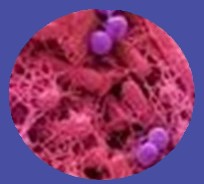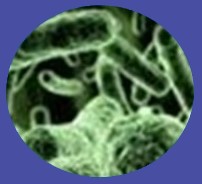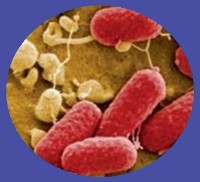INTRODUCTION
One of the vital lessons learned from the COVID-19 outbreak is the critical need for an extremely fast and absolute accurate test. BiSen Tech's methodology can meet this need because of its unique sensor technology. Perhaps the single most important property of this sensor technology is the total elimination of target amplification.
A target microbe - protozoa, bacteria, or virus - is detected within seconds. BiSen’s methodology is the integration of semiconductor technology and microbiology that takes advantage of a microbe’s extremely high relative permittivity.
TECHNOLOGY
BiSen Tech LLC's Chief Science Officer has invented a technology that combines solid state electronics with bio-molecular probe technology, resulting in a highly sensitive sensor that can detect, electronically and without target preparation or amplification, the presence of a pathogen within several seconds. With no need for target preparation or amplification, the sensor can be incorporated into devices for many diverse applications ranging from remote autonomous monitoring to point-of-care diagnostics. The rapid response will eliminate the time lag currently experienced with testing for the presence of pathogens such as COVID-19, and enable much more effective contact tracing, both forward and backward.
BiSen's bio-electronic technology is a paradigm shift in pathogen detection. Its significance lies in its entirely new approach to pathogen detection and identification. It is not a refinement of, an improvement on, or a novel offshoot of existing pathogen detection technologies.
Currently available technologies (including the newly announced Abbott ID NOW COVID-19 test) rely on complex treatment of the suspected pathogen. They require costly equipment, expensive reagents, highly detailed procedures and skilled technicians, and significant processing time.
By contrast, BiSen's technology uses the pathogen itself, in its natural state, to cause a uniquely designed transistor to turn on, thereby indicating its presence. With no requirement for human intervention or supplies (other than distilled water in some applications), BiSen's sensor chips will be inexpensive to acquire and operate, will be quick - several seconds for detection, 3 minutes for confirmation, and will enable a wide variety of devices to detect and identify intentional and unintentional pathogenic contamination in diverse settings.
Devices utilizing our bio-electronic technology will relieve the overwhelming burden that clinical labs have, particularly in epidemic/pandemic outbreaks. For example, our technology will permit the following testing protocol for COVID-19: patient gives a saliva sample; the sample is diluted with distilled water; our sensor is immersed in the diluted sample; positive or negative results are indicated in several seconds; test continues for 3 minutes to guard against false positives/negatives; patient is immediately informed of test results, and an electronic record of the test results can be automatically transmitted to the patient's physician. Testing can be performed in a hospital setting, a doctor's office, a nursing home, an airport or a parking lot, with immediate results.
BiSen Tech's technology exploits the bio-chemical, physical, and electrical properties of pathogens in conjunction with existing semiconductor technology and current molecular probe technology.
Our multidisciplinary approach draws together 3 disparate threads: (1) field effect transistor (FET) technology used in everyday electronic devices; (2) the relative permittivity property of microbes; and (3) molecular probe technology.
(1) A standard FET is constructed in layers. The gate electrode
A standard FET is constructed in layers. The gate electrode
lays flat upon the gate insulator which in turn lays flat upon the
semiconductor (Fig. 1). Applying a voltage to the gate electrode
causes an electric field to arise between the gate electrode and
the semiconductor. If the voltage exceeds the Threshold Voltage
for that transistor, the field at the semiconductor will be strong
enough to cause the transistor to turn on; otherwise it remains off.
Figure 1
In our unique transistor (Figures 2 and 3), the gate electrode is constructed at a right angle to the plane of the device and is slightly offset from the gate insulator and semiconductor - we refer to this as an Orthogonal (off-set) Gate Field Effect Transistor (OGFET). When a voltage is applied to the orthogonal gate electrode of an OGFET, an electric field still arises between it and the semiconductor, and the transistor functions in the same manner as a standard FET: if the field between the gate and the semiconductor is strong enough the transistor turns on, otherwise it remains off.
Figure 2
Figure 3
(2) Relative permittivity is the ability of a substance to transfer an electric field, as compared to that of empty space. Relative permittivity as a function of measurement frequency is a well-known physical property of microbes. A paper presented by John H. Miller, Jr. and James R. Claycomb [Ref. 1] has shown that the relative permittivity of Escherichia coli at 10Hz is 800,000. Other references show the relative permittivity of pathogens at or even greater than 1,000,000 at 10Hz. [Ref. 2 & 3]. The relative permittivity of water is about 80.
Relative permittivity is the ability of a substance to transfer an electric field, as compared to that of empty space. Relative permittivity as a function of measurement frequency is a well-known physical property of microbes. A paper presented by John H. Miller, Jr. and James R. Claycomb [Ref. 1] has shown that the relative permittivity of Escherichia coli at 10Hz is 800,000. Other references show the relative permittivity of pathogens at or even greater than 1,000,000 at 10Hz. [Ref. 2 & 3]. The relative permittivity of water is about 80.
Figure 4 [Ref. 1] shows the plot of log relative permittivity
versus log measurement frequency for several substances
including Escherichia coli, yeast, glycol, H2O:Y2O3 and H2O.
Of note is the very high relative permittivity of Escherichia coli
(blue data plot) at lower measurement frequencies.
Note that water has a relative permittivity of about 80 at all
shown frequencies.
Figure 4
Combining those 2 threads, if an appropriate voltage less than the Threshold Voltage is applied to an OGFET whose interior angle is vacant the electric field between the orthogonal gate electrode and the semiconductor will be too weak to cause the transistor to turn on. However, if the exact same voltage is applied to an OGFET whose interior angle is at least partially occupied by a single pathogen, the high relative permittivity of the pathogen very effectively transfers the electric field between the gate electrode and the semiconductor, causing the transistor to turn on and indicate the presence of the pathogen. (Figures 5 and 6)
Figure 5
Figure 6
The pathogen's high relative permittivity can be thought of as shortening the distance between the gate electrode and the semiconductor, thus permitting an otherwise too small voltage to cause the transistor to turn on. An important point is that the very large relative permittivity of pathogens is exploited solely to transfer the electric field between the gate electrode and the semiconductor, thereby causing the transistor to turn on. There is simply no need to measure the relative permittivity of a pathogen in order to detect, identify or quantify it. It is only necessary that the relative permittivity of a pathogen be greater (preferably at least 1 order of magnitude) than the relative permittivity
of water. In this way, a pathogen can be detected in its natural state and its natural environment without preparation or amplification.
1
(3) Any microbe occupying an OGFET will cause it to turn on. Molecular probe technology is utilized to discriminate between microbes of interest and those that are not. Molecular probes are strands of specific antibodies, oligonucleotides, oligopeptides, etc., designed to capture specific targeted pathogens such as particular strains of E. coli or Cryptosporidium parvum or COVID-19. Using known methods, the interior angle
Any microbe occupying an OGFET will cause it to turn on. Molecular probe technology is utilized to discriminate between microbes of interest and those that are not. Molecular probes are strands of specific antibodies, oligonucleotides, oligopeptides, etc., designed to capture specific targeted pathogens such as particular strains of E. coli or Cryptosporidium parvum or COVID-19. Using known methods, the interior angle
of the OGFET is functionalized by tightly bonding the molecular probes to its gate insulator.
When a target pathogen is presented to the OGFET, the molecular probes immobilize the pathogen in the interior angle and successive interrogations of the transistor will indicate the continuous presence of the pathogen. Non-target microbes, however, are not immobilized by the molecular probes but are swept away and successive interrogations of that particular OGFET every 1 to 2 seconds will show no consistent microbe presence.
An array of a million individual sensors, OGFETs, can easily fit on a 1cm x 1cm square semiconductor chip.
By varying the geometry of the individual transistors, the technology can detect microbes ranging in size from viruses to bacteria to protozoa. The computer chips are inexpensive to manufacture: the technology needed to manufacture OGFETs of appropriate size is 2 to 3 generations old. 2,3 Furthermore, these chips will be re-usable. Depending on the design of the probe used to functionalize the transistors, typical capture hold times would be a few minutes up to about 30 minutes. Upon the elapse of the designed time period the molecular probes release the pathogen and the OGFET becomes available for continued target pathogen detection. This effect is known as catch-and-release" which enables calculation of pathogen concentration with the added benefit that OGFET sensor elements are self-cleaning. The text above describes the basic principles of the technology. Other considerations include the following: the actual gate well depth needs only be a fraction of the size of the target because the relative permittivity of microbes at low frequencies is extraordinarily high. Also, the bottom of the gate well can include a thin layer of a conductor on the surface of the thin gate insulator to provide an electric field spreading element.
By way of example, the relative permittivity of E. coli O157:H7 at 10 Hz is at least ten thousand times greater than the relative permittivity of water.
With current semiconductor photolithography capabilities, the gate length and the gate width of a transistor can be on the order of 10 nm or less.
2
1
References:
1. Dielectric Responses of Living Organisms [John H. Miller, Jr. (UH) and James R. Claycomb (UH) Houston-Clear Lake
Dielectric Responses of Living Organisms [John H. Miller, Jr. (UH) and James R. Claycomb (UH) Houston-Clear Lake
ISSO Annual Report Y2002—pp. 91-96]
2. Low-frequency dielectric dispersion of bacterial cell suspensions Koji Asami Institute for Chemical Research,
Low-frequency dielectric dispersion of bacterial cell suspensions Koji Asami Institute for Chemical Research,
Kyoto University, Uji, Kyoto 611-0011, Japan
3. The passive electrical properties of biological systems: their significance in physiology, biophysics and biotechnology
The passive electrical properties of biological systems: their significance in physiology, biophysics and biotechnology
Ronald Pethig, Institute of Molecular and Biomolecular Electronics, University College of North Wales, Dean Street,
Bangor, Gwynedd LL57 IUT, UK; and Douglas B Kell, Department of Botany and Microbiology, University College of
Wales, Aberystwyth, Dyfed SY23 3DA, UK. February 1987.
BioSensors
Changing the Paradigm for Waterborne Pathogen Detection
